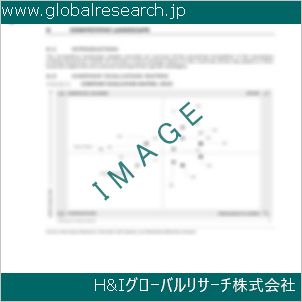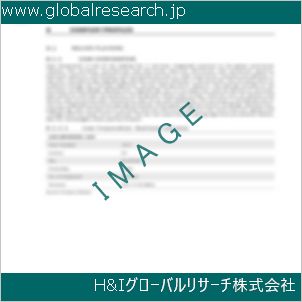1 PVDF Binder for Battery Market Overview
1.1 Product Definition
1.2 PVDF Binder for Battery Segment by Type
1.2.1 Global PVDF Binder for Battery Market Value Growth Rate Analysis by Type 2022 VS 2029
1.2.2 Emulsion Polymerization
1.2.3 Suspension Polymerization
1.3 PVDF Binder for Battery Segment by Application
1.3.1 Global PVDF Binder for Battery Market Value Growth Rate Analysis by Application: 2022 VS 2029
1.3.2 Energy Storage Battery
1.3.3 Digital Battery
1.3.4 Power Battery
1.3.5 Others
1.4 Global Market Growth Prospects
1.4.1 Global PVDF Binder for Battery Production Value Estimates and Forecasts (2018-2029)
1.4.2 Global PVDF Binder for Battery Production Capacity Estimates and Forecasts (2018-2029)
1.4.3 Global PVDF Binder for Battery Production Estimates and Forecasts (2018-2029)
1.4.4 Global PVDF Binder for Battery Market Average Price Estimates and Forecasts (2018-2029)
1.5 Assumptions and Limitations
2 Market Competition by Manufacturers
2.1 Global PVDF Binder for Battery Production Market Share by Manufacturers (2018-2023)
2.2 Global PVDF Binder for Battery Production Value Market Share by Manufacturers (2018-2023)
2.3 Global Key Players of PVDF Binder for Battery, Industry Ranking, 2021 VS 2022 VS 2023
2.4 Global PVDF Binder for Battery Market Share by Company Type (Tier 1, Tier 2 and Tier 3)
2.5 Global PVDF Binder for Battery Average Price by Manufacturers (2018-2023)
2.6 Global Key Manufacturers of PVDF Binder for Battery, Manufacturing Base Distribution and Headquarters
2.7 Global Key Manufacturers of PVDF Binder for Battery, Product Offered and Application
2.8 Global Key Manufacturers of PVDF Binder for Battery, Date of Enter into This Industry
2.9 PVDF Binder for Battery Market Competitive Situation and Trends
2.9.1 PVDF Binder for Battery Market Concentration Rate
2.9.2 Global 5 and 10 Largest PVDF Binder for Battery Players Market Share by Revenue
2.10 Mergers & Acquisitions, Expansion
3 PVDF Binder for Battery Production by Region
3.1 Global PVDF Binder for Battery Production Value Estimates and Forecasts by Region: 2018 VS 2022 VS 2029
3.2 Global PVDF Binder for Battery Production Value by Region (2018-2029)
3.2.1 Global PVDF Binder for Battery Production Value Market Share by Region (2018-2023)
3.2.2 Global Forecasted Production Value of PVDF Binder for Battery by Region (2024-2029)
3.3 Global PVDF Binder for Battery Production Estimates and Forecasts by Region: 2018 VS 2022 VS 2029
3.4 Global PVDF Binder for Battery Production by Region (2018-2029)
3.4.1 Global PVDF Binder for Battery Production Market Share by Region (2018-2023)
3.4.2 Global Forecasted Production of PVDF Binder for Battery by Region (2024-2029)
3.5 Global PVDF Binder for Battery Market Price Analysis by Region (2018-2023)
3.6 Global PVDF Binder for Battery Production and Value, Year-over-Year Growth
3.6.1 North America PVDF Binder for Battery Production Value Estimates and Forecasts (2018-2029)
3.6.2 Europe PVDF Binder for Battery Production Value Estimates and Forecasts (2018-2029)
3.6.3 China PVDF Binder for Battery Production Value Estimates and Forecasts (2018-2029)
3.6.4 Japan PVDF Binder for Battery Production Value Estimates and Forecasts (2018-2029)
4 PVDF Binder for Battery Consumption by Region
4.1 Global PVDF Binder for Battery Consumption Estimates and Forecasts by Region: 2018 VS 2022 VS 2029
4.2 Global PVDF Binder for Battery Consumption by Region (2018-2029)
4.2.1 Global PVDF Binder for Battery Consumption by Region (2018-2023)
4.2.2 Global PVDF Binder for Battery Forecasted Consumption by Region (2024-2029)
4.3 North America
4.3.1 North America PVDF Binder for Battery Consumption Growth Rate by Country: 2018 VS 2022 VS 2029
4.3.2 North America PVDF Binder for Battery Consumption by Country (2018-2029)
4.3.3 United States
4.3.4 Canada
4.4 Europe
4.4.1 Europe PVDF Binder for Battery Consumption Growth Rate by Country: 2018 VS 2022 VS 2029
4.4.2 Europe PVDF Binder for Battery Consumption by Country (2018-2029)
4.4.3 Germany
4.4.4 France
4.4.5 U.K.
4.4.6 Italy
4.4.7 Russia
4.5 Asia Pacific
4.5.1 Asia Pacific PVDF Binder for Battery Consumption Growth Rate by Region: 2018 VS 2022 VS 2029
4.5.2 Asia Pacific PVDF Binder for Battery Consumption by Region (2018-2029)
4.5.3 China
4.5.4 Japan
4.5.5 South Korea
4.5.6 China Taiwan
4.5.7 Southeast Asia
4.5.8 India
4.6 Latin America, Middle East & Africa
4.6.1 Latin America, Middle East & Africa PVDF Binder for Battery Consumption Growth Rate by Country: 2018 VS 2022 VS 2029
4.6.2 Latin America, Middle East & Africa PVDF Binder for Battery Consumption by Country (2018-2029)
4.6.3 Mexico
4.6.4 Brazil
4.6.5 Turkey
4.6.6 GCC Countries
5 Segment by Type
5.1 Global PVDF Binder for Battery Production by Type (2018-2029)
5.1.1 Global PVDF Binder for Battery Production by Type (2018-2023)
5.1.2 Global PVDF Binder for Battery Production by Type (2024-2029)
5.1.3 Global PVDF Binder for Battery Production Market Share by Type (2018-2029)
5.2 Global PVDF Binder for Battery Production Value by Type (2018-2029)
5.2.1 Global PVDF Binder for Battery Production Value by Type (2018-2023)
5.2.2 Global PVDF Binder for Battery Production Value by Type (2024-2029)
5.2.3 Global PVDF Binder for Battery Production Value Market Share by Type (2018-2029)
5.3 Global PVDF Binder for Battery Price by Type (2018-2029)
6 Segment by Application
6.1 Global PVDF Binder for Battery Production by Application (2018-2029)
6.1.1 Global PVDF Binder for Battery Production by Application (2018-2023)
6.1.2 Global PVDF Binder for Battery Production by Application (2024-2029)
6.1.3 Global PVDF Binder for Battery Production Market Share by Application (2018-2029)
6.2 Global PVDF Binder for Battery Production Value by Application (2018-2029)
6.2.1 Global PVDF Binder for Battery Production Value by Application (2018-2023)
6.2.2 Global PVDF Binder for Battery Production Value by Application (2024-2029)
6.2.3 Global PVDF Binder for Battery Production Value Market Share by Application (2018-2029)
6.3 Global PVDF Binder for Battery Price by Application (2018-2029)
7 Key Companies Profiled
7.1 Kureha
7.1.1 Kureha PVDF Binder for Battery Corporation Information
7.1.2 Kureha PVDF Binder for Battery Product Portfolio
7.1.3 Kureha PVDF Binder for Battery Production, Value, Price and Gross Margin (2018-2023)
7.1.4 Kureha Main Business and Markets Served
7.1.5 Kureha Recent Developments/Updates
7.2 Solvay
7.2.1 Solvay PVDF Binder for Battery Corporation Information
7.2.2 Solvay PVDF Binder for Battery Product Portfolio
7.2.3 Solvay PVDF Binder for Battery Production, Value, Price and Gross Margin (2018-2023)
7.2.4 Solvay Main Business and Markets Served
7.2.5 Solvay Recent Developments/Updates
7.3 Arkema
7.3.1 Arkema PVDF Binder for Battery Corporation Information
7.3.2 Arkema PVDF Binder for Battery Product Portfolio
7.3.3 Arkema PVDF Binder for Battery Production, Value, Price and Gross Margin (2018-2023)
7.3.4 Arkema Main Business and Markets Served
7.3.5 Arkema Recent Developments/Updates
7.4 Sino-Fluorine
7.4.1 Sino-Fluorine PVDF Binder for Battery Corporation Information
7.4.2 Sino-Fluorine PVDF Binder for Battery Product Portfolio
7.4.3 Sino-Fluorine PVDF Binder for Battery Production, Value, Price and Gross Margin (2018-2023)
7.4.4 Sino-Fluorine Main Business and Markets Served
7.4.5 Sino-Fluorine Recent Developments/Updates
7.5 Shanghai Huayi 3F New Materials
7.5.1 Shanghai Huayi 3F New Materials PVDF Binder for Battery Corporation Information
7.5.2 Shanghai Huayi 3F New Materials PVDF Binder for Battery Product Portfolio
7.5.3 Shanghai Huayi 3F New Materials PVDF Binder for Battery Production, Value, Price and Gross Margin (2018-2023)
7.5.4 Shanghai Huayi 3F New Materials Main Business and Markets Served
7.5.5 Shanghai Huayi 3F New Materials Recent Developments/Updates
7.6 Huaxiashenzhou
7.6.1 Huaxiashenzhou PVDF Binder for Battery Corporation Information
7.6.2 Huaxiashenzhou PVDF Binder for Battery Product Portfolio
7.6.3 Huaxiashenzhou PVDF Binder for Battery Production, Value, Price and Gross Margin (2018-2023)
7.6.4 Huaxiashenzhou Main Business and Markets Served
7.6.5 Huaxiashenzhou Recent Developments/Updates
7.7 Sinochem
7.7.1 Sinochem PVDF Binder for Battery Corporation Information
7.7.2 Sinochem PVDF Binder for Battery Product Portfolio
7.7.3 Sinochem PVDF Binder for Battery Production, Value, Price and Gross Margin (2018-2023)
7.7.4 Sinochem Main Business and Markets Served
7.7.5 Sinochem Recent Developments/Updates
8 Industry Chain and Sales Channels Analysis
8.1 PVDF Binder for Battery Industry Chain Analysis
8.2 PVDF Binder for Battery Key Raw Materials
8.2.1 Key Raw Materials
8.2.2 Raw Materials Key Suppliers
8.3 PVDF Binder for Battery Production Mode & Process
8.4 PVDF Binder for Battery Sales and Marketing
8.4.1 PVDF Binder for Battery Sales Channels
8.4.2 PVDF Binder for Battery Distributors
8.5 PVDF Binder for Battery Customers
9 PVDF Binder for Battery Market Dynamics
9.1 PVDF Binder for Battery Industry Trends
9.2 PVDF Binder for Battery Market Drivers
9.3 PVDF Binder for Battery Market Challenges
9.4 PVDF Binder for Battery Market Restraints
10 Research Finding and Conclusion
11 Methodology and Data Source
11.1 Methodology/Research Approach
11.1.1 Research Programs/Design
11.1.2 Market Size Estimation
11.1.3 Market Breakdown and Data Triangulation
11.2 Data Source
11.2.1 Secondary Sources
11.2.2 Primary Sources
11.3 Author List
11.4 Disclaimer
| ※参考情報 電池用PVDFバインダーについて、その概念や特徴、種類、用途、関連技術を詳しく説明いたします。 電池用PVDFバインダーは、リチウムイオン電池やその他のバッテリー技術において、電極の材料を結合するための重要な役割を果たします。PVDFはポリフッ化ビニリデンの略であり、化学的にはフッ素を含むポリマーの一種です。PVDFバインダーは電池の性能を向上させるために必要不可欠な材料ですが、その特性や選別方法、用途について深く理解することは、電池開発において非常に重要です。 PVDFバインダーの最大の特徴は、高い化学的安定性と優れた機械的特性です。PVDFは、酸化還元反応や高温下でもその性質を維持する能力があるため、様々な環境条件でも使用できます。また、熱的安定性も高く、通常の使用温度範囲内で安定していることが求められるバッテリーにおいて重要な特性です。さらに、PVDFは電気絶縁性を持つため、電池内部でのショートやリークを防ぐことができます。 PVDFバインダーは、電池のアノードやカソードに使用される材料を結合し、機械的な強度や耐久性を向上させるために必要不可欠です。そのため、電極の材料とバインダーが適切に混合され、均一なペースト状にされることが重要です。この混合プロセスによって、バインダーが電極材料の表面を均等に覆うことができ、電極の機能を最高レベルで発揮させることが可能になります。 PVDFバインダーの種類には、様々な共重合体や添加剤が含まれることがあり、それによって特性を調整することができます。例えば、PVDF-HFP(ポリフッ化ビニリデン-コポリマー)は、PVDFの特性にフッ化ビニリデンを組み合わせたもので、改良された柔軟性や接着性を持っています。このようなバインダーは、特定の用途に応じた性能向上が期待できます。 PVDFバインダーの用途は非常に広範囲にわたります。一般的にはリチウムイオン電池の正極や負極に使用されますが、他にもナトリウムイオン電池や固体電池といった新しいバッテリー技術にも適用可能です。また、PVDFは電子機器だけでなく、電気自動車やエネルギー貯蔵システム、再生可能エネルギー源のバッテリーにも使用されることが増えてきています。これにより、電池のさらなる性能向上とコスト削減が期待されています。 PVDFバインダーを使用する際には、そのプロセスや関連技術にも注目する必要があります。バインダーの配合比率や混合条件は、最終的な電池の性能に大きな影響を与えます。そのため、最適なプロセスを探る研究が進められています。例えば、ナノ粒子の導入による介在効果や、モルフォロジーの調整に関する研究が行われており、これによりさらなる性能の向上が図られています。 PVDFバインダーに関連する技術としては、電極製造方法、乾燥方法、コーティング技術などがあります。これらの技術は、PVDFバインダーを用いた電極を効率よく製造し、最終的な電池の性能を最大限に引き出すために重要です。例えば、スリットコーティングやスクリーン印刷を用いることで、一定の厚さと均一性を保ちながら電極を作成することができます。 さらに、PVDFは生分解性やバイオコンパチビリティに関する研究も進行中であり、持続可能なエネルギーソリューションとしての期待も高まっています。今後の技術革新により、環境に優しいバッテリーの実現が期待されており、PVDFバインダーはその中心的な役割を担う可能性があります。 結論として、PVDFバインダーは電池技術において重要な材料であり、その特徴や種類、用途は多岐にわたります。今後も持続可能なエネルギーソリューションとしての役割を果たすために、さらなる研究開発が求められていくことでしょう。これにより、より高性能で環境に優しい電池が実現され、エネルギー問題の解決に寄与することが期待されています。 |
❖ 免責事項 ❖
http://www.globalresearch.jp/disclaimer












